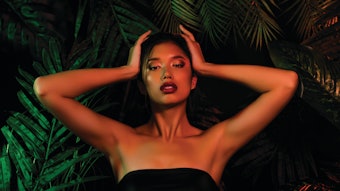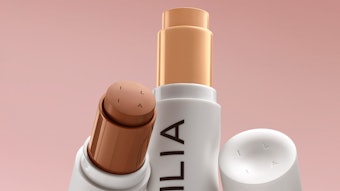The foundation of the global beauty industry has always been rooted in the power of change and transformation. But we are now living in a new era where technology has allowed people to believe anything is possible and that there are no—or very few—product or brand boundaries. Today’s consumers are seeking an even higher level of change, interaction, innovation and expression. So just how do brands approach this?
Creating Change
Brands need to embrace the concept of change and their role in being able to make effective change happen—on all levels. And to recognize that design that can create the right kind of change and help successfully and creatively develop a brand.
As a design agency working in this industry, a view of change is fundamental to Pearlfisher's work, and we run an ongoing Futures Programme to understand change, inspire creativity and design for the future.
The firm's most recent Futures study, Body Mode, looked into how the body of the future might look, feel and function. As part of this we identified a series of shifts that could impact the innovation and development of today’s global beauty marketplace. But the one shift that is maybe the catalyst of most radical change we are calling "Dictatorial to Free."
The Shift from Dictatorial to Free
Today we are moving away from stereotypes. Beauty is now distinct, unique and inimitable as is evidenced by a new breed of role models, embracing everyone from Helen Mirren to Lady GaGa. Our perception and acceptance of what constitutes beauty is truly fluid and diverse. And we have also seen the perennial issue of weight now move beyond mass branding—from pioneers such as Dove to high fashion magazines and designers such as Karl Lagerfeld featuring the plus-size model.
Essentially, we have become a truly global community living in an age of anything goes: a collage of different cultural aesthetics and influences blurring the boundaries of race, gender, sexuality and age. And if we look at each of these in turn, we see just how beauty is responding and, maybe more importantly, just why we need to ask "What next?"
Race is something that is morphing on a daily basis and, in certain respects, is actually becoming homogenized as we move around the globe. As cultures continue to meld, influence and impact on each other, we are seeing the continued evolution of products. L’Oréal’s White Perfect is just one of a new and expanding portfolio of whitening balms and powders that look to blend and even racial features and skin tone. But whether this is really a correct, long-term and future-focused response is actually another question all together.
Gender is another area that has a great impact on beauty ideals. What happens when a man is as beautiful, if not more beautiful, than a woman? We are moving so much further on from just buying into androgyny or the metrosexual male. We have seen male supermodels, such as Andrej Pejic, become the poster boys for fashion and cosmetics. And sexuality and the acceptance of transgender role models—think celebrated artist Grayson Perry—is creating another idea and ideal for the beauty consumer to explore and buy into.
Age is integral to the whole beauty offer and always one of the most lucrative sectors of this market. But, it is still one of the hardest to get right in terms of positioning and targeting. L’Oréal uses Jane Fonda as a brand ambassador to define and promote by age, while MAC uses role models such as nonagenarian style icon Iris Apfel to show that "age is a state of mind" and not just about peddling "age-defying creams." But, with a growing 50+ demographic, we should be looking for innovative, daring or cool ways to design with more specificity.
A New Influence and Inspiration
With these influences now combining to push the boundaries of what beauty can be, it’s not surprising that we are seeing a new and very different world come to life. Do the brands, products, tools and experiences currently available really cater to this? If not, are there opportunities to create new and unique expressions and open up new worlds of product and delivery?
First of all, we need to change our mindset. There really has never been as exciting a time as now. This new collage of influences, aesthetics and culture is opening up a whole new world of possibility to us. Brands need to welcome and work with this new challenge and these new influences, to create new expressions of beauty that are different to anything that we have seen before.
Optimizing the Individual
The world of cosmeceuticals revolutionized this industry. But we will see a new generation of these brands and a new focus on, and coming together of, nutrition, technology and science that will directly affect the beauty offer.
As our lives become busier and we want to optimize our health, lifestyles and our appearance, we will look to combine our nutrition and beauty. New products, such as pre-training antioxidant Berry Burn from Clean & Lean, are forming and driving a new and all-encompassing health and wellness platform, establishing a new definition of nutrition that impacts on beauty from the inside out.
Technology also has undoubtedly advanced the greatest pace of change, but, as our world becomes increasingly personalized, technology will need to find new ways to make this a reality. Self-customization was the reality for amputee athletes until Nike developed the phenomenal Nike Sole. And, in this vein, customization on a mass level needs to be a very real consideration for our beauty and cosmetic brands. Science too will need to reflect this approach as we understand our strengths and weaknesses and look for specific and tailored solutions in the form of personalized medicine.
Basically, consumers have started to define—and redefine—themselves as individuals and are looking for ways to optimize this and its outward expression. It will fall to brands to meet these needs and desires. But how do we innovate, create and design for this?
A New Framework for Beauty
As part of Pearlfisher's Body Mode study, we too have imagined how the future beauty consumer might look and function. And, as a result, we have designed Frame, a new beauty concept that allows us to explore the ultimate in personalized creativity and find a perfectly matched solution for our individual beauty desires and needs.
Frame allows you to scan the vast online world for makeup inspiration and then match your unique facial profile to create your physical ID. After transforming your inspiration into a complete new look, it acts as an on-hand makeup artist to achieve a professional finish through layers of perfectly applied product.
A Future Expression of Beauty
Frame may seem futuristic in look and delivery, but it could soon be a reality. It uses technology that is already in existence brought together to create one streamlined process. It completes the journey of change from exploration to perfect finish and perfectly taps into the need for personal customization.
The future face of the beauty consumer is about individuality, experimentation, creativity and self-expression. This presents a new, exciting and challenging opportunity for beauty brands to find new ways to meet their individual needs and desires. But it is with a combination of design thinking and innovation that we will see the real difference—the real change.
Jonathan Ford is founding partner and chief creative officer at Pearlfisher. [email protected]










